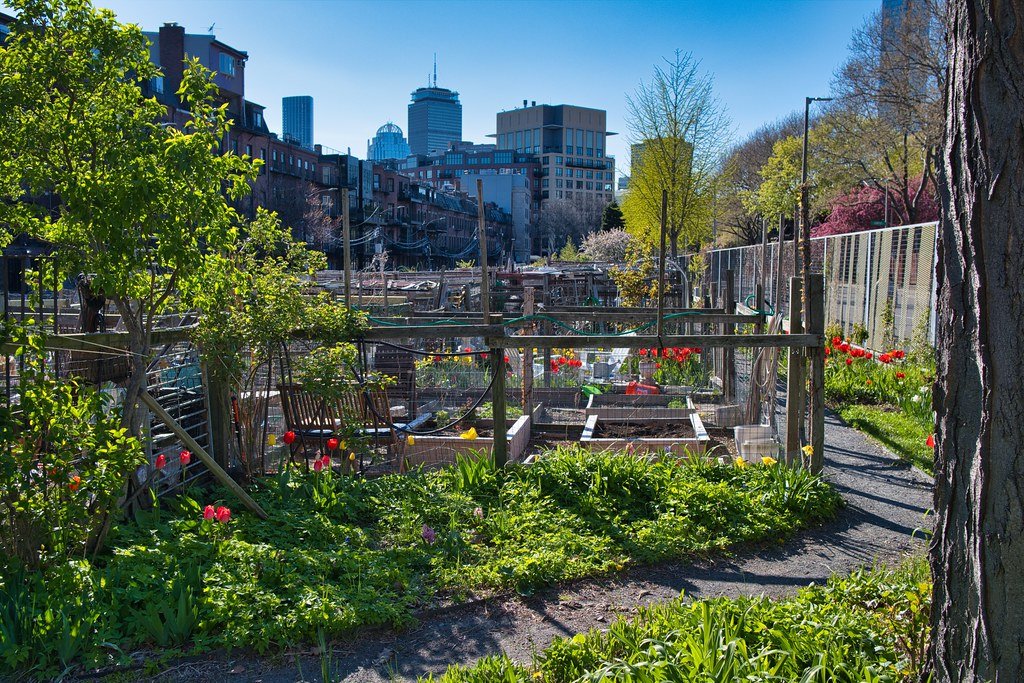by Nike Oshodi
Urban agriculture is a term used to describe growing food in urban environments, including community gardens, rooftop gardens, fish farming, farmers’ markets, and many other types of small-scale urban food production and distribution. It benefits urban communities by providing them with fresh local food supplies and green spaces that promote teamwork and collaboration. Urban agriculture spaces can also decrease the effects of urban heat islands. Urban farming helps to provide nutritional security and educational benefits for all those involved with these urban plots both as consumers and farmers, including the added financial benefit to both consumers and vendors of locally grown and sold products.
Berkeley Community Garden in Boston, MA. Photo: Chris Rycroft, 2021
There are many challenges to developing urban agriculture plots, but the main issue tends to be space. Cities frequently lack enough space to support traditional agriculture efforts and have less access to soil than rural and suburban communities. The congested nature of cities makes it difficult to find space to cultivate land and animals. Supporting a growing urban population drives up demand for free space, and zoning and land ownership issues can make it difficult for communities to access unused lots to convert into productive farmland.
However, recent technological advancements leverage these challenges to drive innovation and allow urban farmers to succeed. Many forms of technology work in tandem with urban farms to amplify their positive effects on communities, including an example I’d like to highlight in this blog: Hydroponics. Hydroponics are systems that grow plants in any non-soil nutrient solution such as water, sand, gravel, or perlite. It addresses the challenge of accessing soil in cities while providing additional benefits to locally grown crops. Many crops thrive in hydroponic environments including leafy greens, strawberries, herbs, cherry tomatoes, and other similar plants. The closed nature of hydroponic systems allows farmers to completely control the environment crops grow in, such as the temperature and nutrients the crops receive. This means they don’t have to adhere to normal growing seasons or worry about weather conditions, and nutrients can be catered specifically to plant needs.
A hydroponic “frame” system growing strawberries in Australia. Photo: NSW DPI Schools, 2009
Hydroponics systems can be used on farms of all sizes, from small window sill “farms” to large community gardens. It's a great way for city residents to access healthy food, connect with nature, and learn about food production. On a larger scale, it can be a great way to cooperatively boost urban food security by breaking up food deserts with fresh produce at affordable prices.




